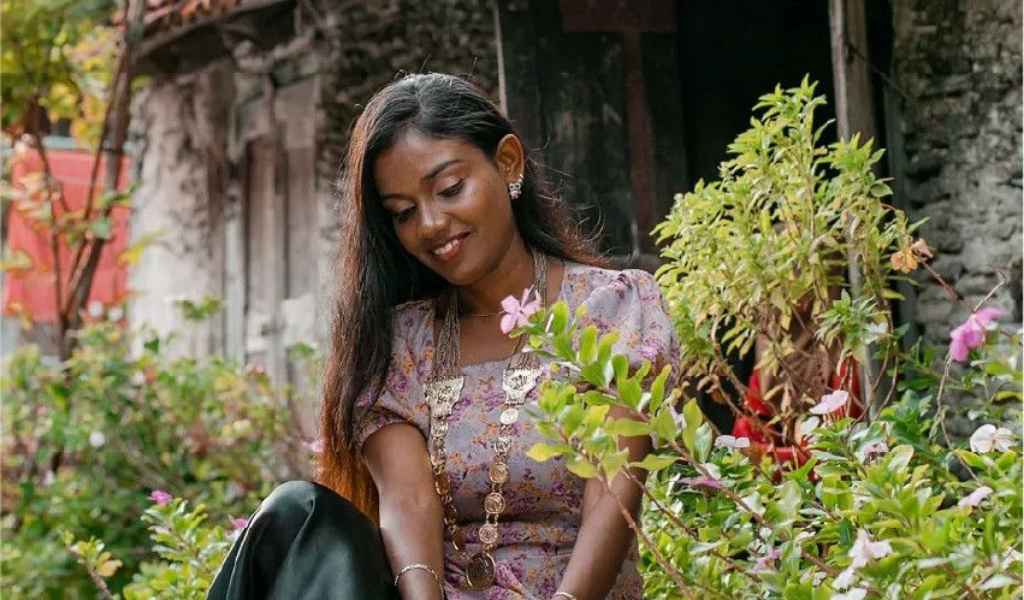

Maldives Traditional Fashion is Still Something to Awe At
Wednesday 9th of March 2022
From the language they speak to the habits they have to the food they make and eat, how and where they grew up, is ingrained in every aspect of life. Tradition follows us wherever we go, and of course, this is said in the best way possible.
Maldivians are no expectation. We have a rich and unique background, complexities at every turn, but something which remained a constant through a lot of the islands is the clothing.
The traditional garb of Maldivians appreciated color, simplicity, and intricacy all at the same time. Even though we rarely see anyone wearing such clothes outside of events, it is highly likely every Maldivian has at least one traditional outfit in their closet.
So, with that said, let's dive straight into the details of some of the outfits that have survived the passage of time till today.
Featured on the cover, Hedhun Buri isn't one that is commonly available in local shops anymore, unless for small children. A lot of places such as Instagram pages have them available for rent, as most do not need such outfits on a regular basis, and as such, it would be a waste of resources to custom make one at a tailor.
This is a daywear outfit but was often used for special occasions such as boduberu or bandiyaa dance performances held on celebratory days. The tops are made with plain or flowery fabrics, with short sleeves (with long sleeves under it for adults who wear buruga) and pleated skirts which end above the knee. This top is worn with a “feyli” (skirt) made of plain black material with white accenting on the hemline or sides. Ladies who wear this dress either wear matching buruga, leave their hair loose, or in a tight braid.

One of the more popular styles of Maldivian women's clothing, Dhivehi Libaas, is still available in local souvenir shops and like the Hedhun Buri, is also available to rent out for one-time occasions if you do not want to invest in one.
This is one of the oldest cultural dresses worn by Maldivian women and it boasts one of the most intricate embroidery techniques called “kasabu viyun” on the “boavalhu” or neckline of the dress. This embroidery surrounds the neckline and sometimes the hem of the skirt or long sleeve. Dhivehi Libaas usually come in bright colors such as red, green, blue, the more official one being the bright blood-red dress. There are variations of this Dhivehi Libaas, the more casual one coming without the silver/gold embroidery and instead with plain clothing of a different color or design stitched near the neckline, hem of the long sleeve.
The outfit is replete with accessories too - thick gold bracelets, a necklace called “fahtaru” ( long gold chain necklace), and a “rumaa falhi” (a small hair bun cover) placed on an elegant sideways chignon.

The most delicate, feminine, and charming type of garb worn by Maldivians in our opinion is the Dhiguhedhun, also known as Faaskurihedhun. Dhiguhedhun, translates to long dress. It is commonly worn at events but there is now a growing trend where brides are wearing it for their wedding ceremonies as well.
It is designed in a way that accentuates the curves of the person wearing the gown. It is a floor-length gown, with long sleeves and a puritan collar. The dress is accessorized with a small lace veil, called “bolifothikolhu”, which is pinned to the back of the hair and runs to the length of the hair which is kept loose and flowing.
Back in the day, Dhiguhedhun was made with plain lace-like material which is sometimes adorned with small beads and such but the dress has evolved over time. Nowadays, chiffon-like materials, with beautiful designs are used to make these dresses.
For men, one of the most casual outfits for men includes a traditional sarong called “Mundu” worn with plain colored t-shirts. Almost all the men wore it as daywear. With hot, humid temperatures, it's not a surprise that Maldivian men traditionally wore the sarong and not much else as they toiled under the sun, fishing and farming.

Now, for traditional wear, it also consisted of a 'mundu', either chequered or ones with simple lines, or a 'feyli' which is usually black or dark red sarongs with white strips on the hem, and a longsleeved white shirt.
This type of attire was worn during special occasions and ceremonies paired with headwear, fashioned with an article of small clothing, which is tied on the head like a cap.